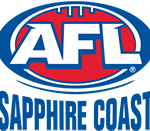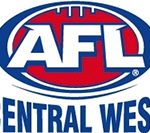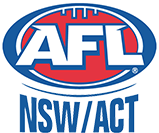Hamstring injuries still high

The AFL’s annual injury survey has showed that injury rates in 2010 continued a gradual but consistent upwards trend in both injury incidence and prevalence.
The AFL injury survey, which was completed for the 19th consecutive year in 2010, was released today after being presented to the AFL Medical Officers’ Association earlier this week.
Injury incidence and injury prevalence have both increased gradually since 2003 whereby an ‘average club list’ of 46 players would now expect to have eight players sidelined due to injury in any given week. This has risen from an average of six players injured per week during the period 2003-2005 and seven players injured per week during the period 2006-2008.
Report authors Dr Hugh Seward and Associate Professor John Orchard said the reported incidence of concussion had remained low over the last decade, according to the survey figures, while the severity of knee anterior cruciate ligament (ACL) tears was also lower in 2010 than in recent seasons. However, overall injury rates had again risen in 2010, the report stated.
Dr Seward and Professor Orchard said hamstring injury incidence and prevalence remained high, as the leading injury in the game that caused players to be absent from the playing field, but these were slightly down when compared to 2009. The averages for hamstring injuries remained in line with long-term historical averages but serious knee ACL injuries saw slightly lower rates in 2010, compared with recent seasons.
"Rates of concussion have been low and steady over the past decade,” the authors said.
“For serious knee injuries, not all players with ACL injuries in 2010 missed the remainder of the season, which is usually the case.
"Some (partial) ACL injuries were treated non-surgically and resulted in less missed time as a result. The use of LARS artificial grafts has contributed to the quicker return to play of some ACL injuries and hence lower prevalence.
"It is still too early to determine whether these grafts will have a good success rate in the longer term, but for circumstances where a quick return is paramount (e.g. older players), then LARS grafts appear to offer an alternative management which allows quicker return to play.
"Further surveillance and research is required before they can be recommended as a long-term alternative for younger players."
The injury report, aside from tracking a long-term low rate of serious head injury as a key safety factor for players, particularly at junior levels, has also been able to report a success in the area of law changes around PCL injuries for ruckmen.
"The trend in centre bounce PCL injuries has continued to remain at record low levels following the introduction of the ruck rule in 2005. In 2010 there were zero PCL injuries from centre bounces and there have been only four in total since 2005."
AFL General Manager Football Operations Adrian Anderson said he wished to thank Dr Seward and Associate Professor Orchard for their work, and in particular thank all clubs for their involvement in producing the survey data.
Mr Anderson said the AFL currently invested more than $300,000 yearly towards injury research and would continue to examine all aspects of player safety, in a bid to reduce injury rates and to keep players on the ground.
"The Injury Survey has played a pivotal role in guiding the AFL Research Board to commission and fund projects that further investigate injuries that are common, severe or increasing in incidence.
"The AFL has also demonstrated a willingness to consider and implement rule changes where necessary to improve player safety. It is our ongoing aim to achieve the ‘gold’ standard of injury surveillance in Australia and equal to the best other surveillance systems worldwide," he said.
The release of the 2010 injury survey again confirmed the medical reasoning behind the Law change that was introduced for the 2011 AFL season, with regard to a substitute player on the interchange bench.
"Research conducted in 2010 demonstrated that each interchange is beneficial (from an injury risk viewpoint) for the team that makes it, but is harmful for the opposition team," the report said.
"There appears to be an association between several factors (interchange use, player speed and tackling), as referred to in the 2009 Injury Report, although the relationship is complicated."






























